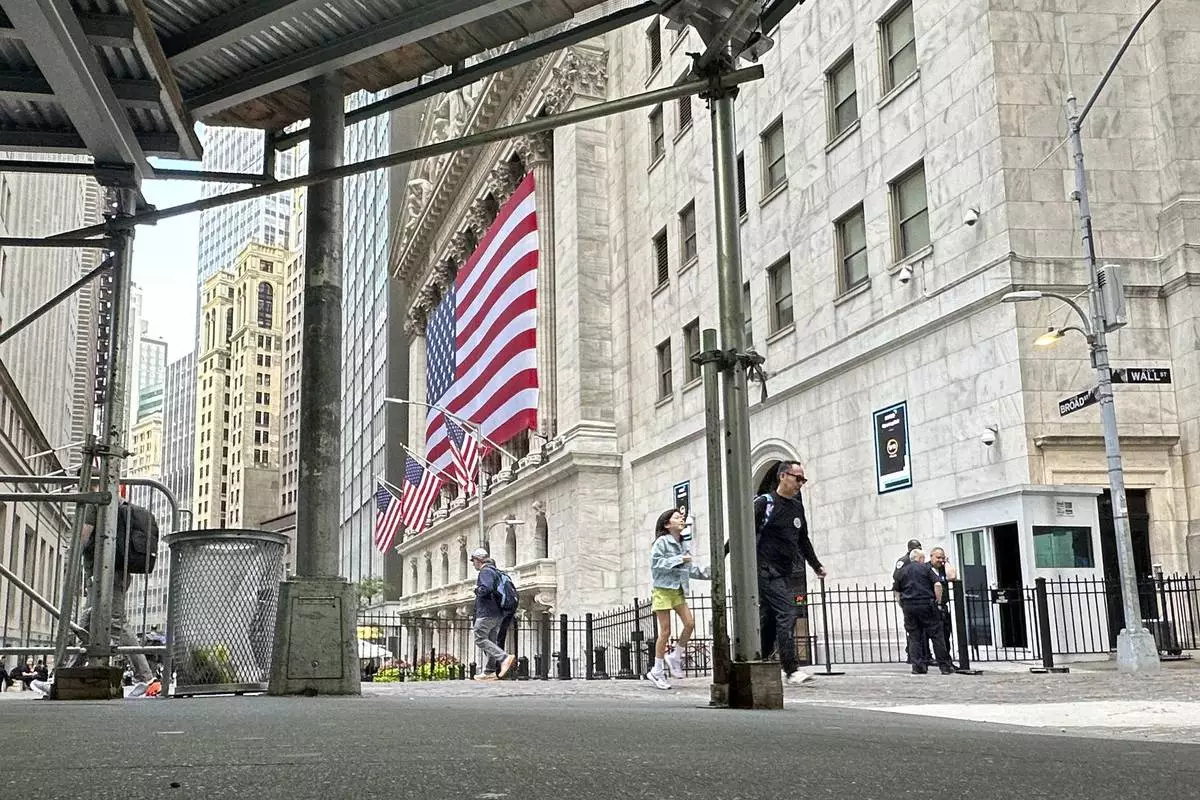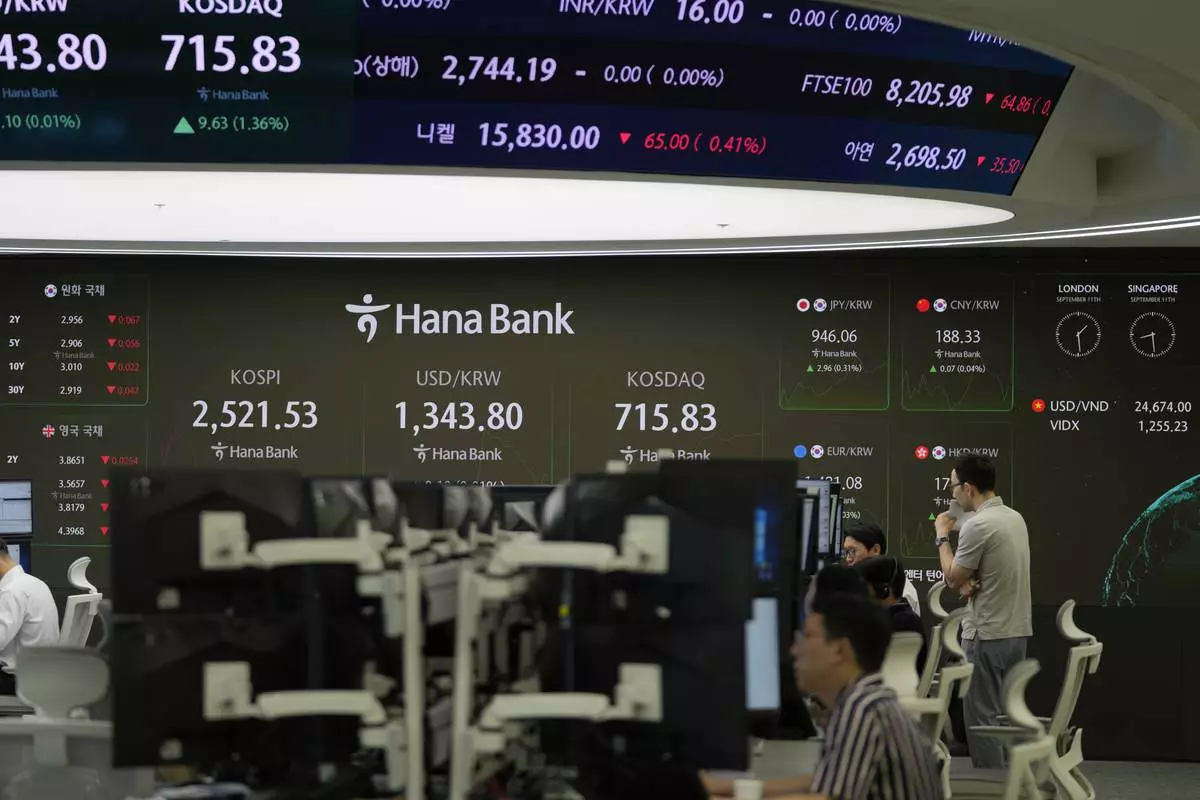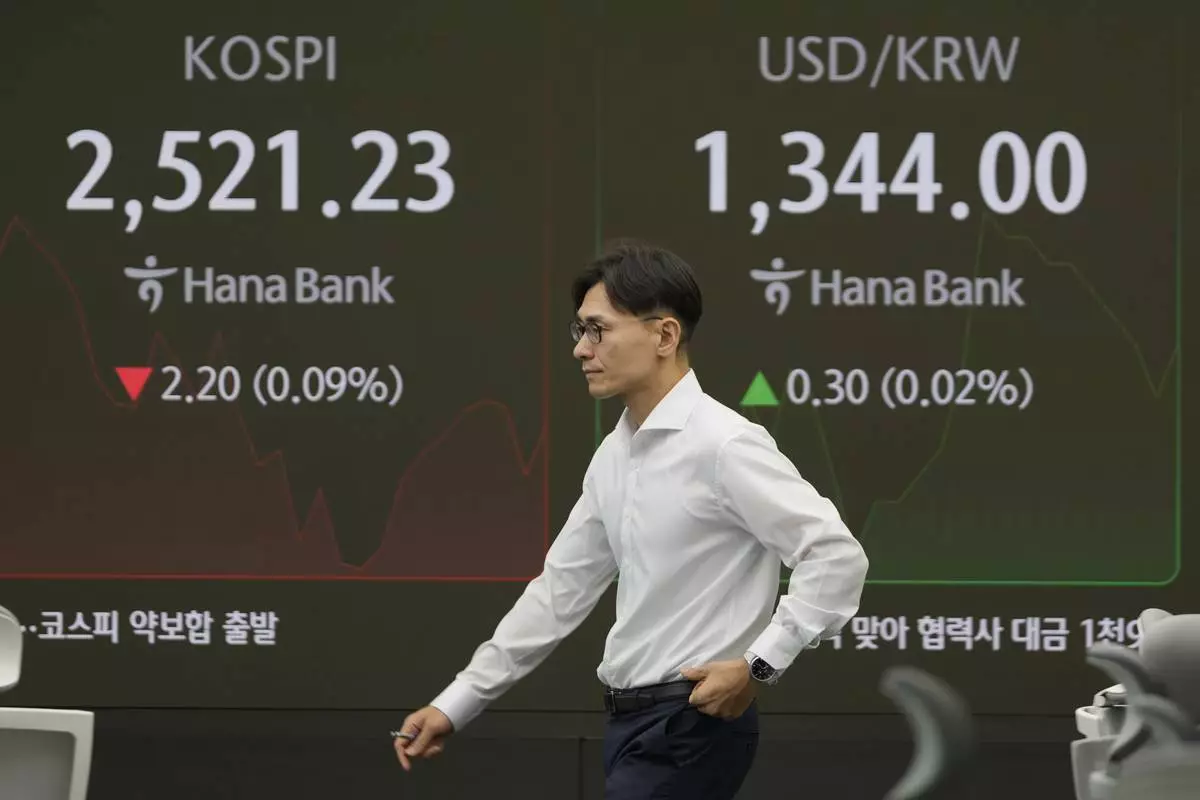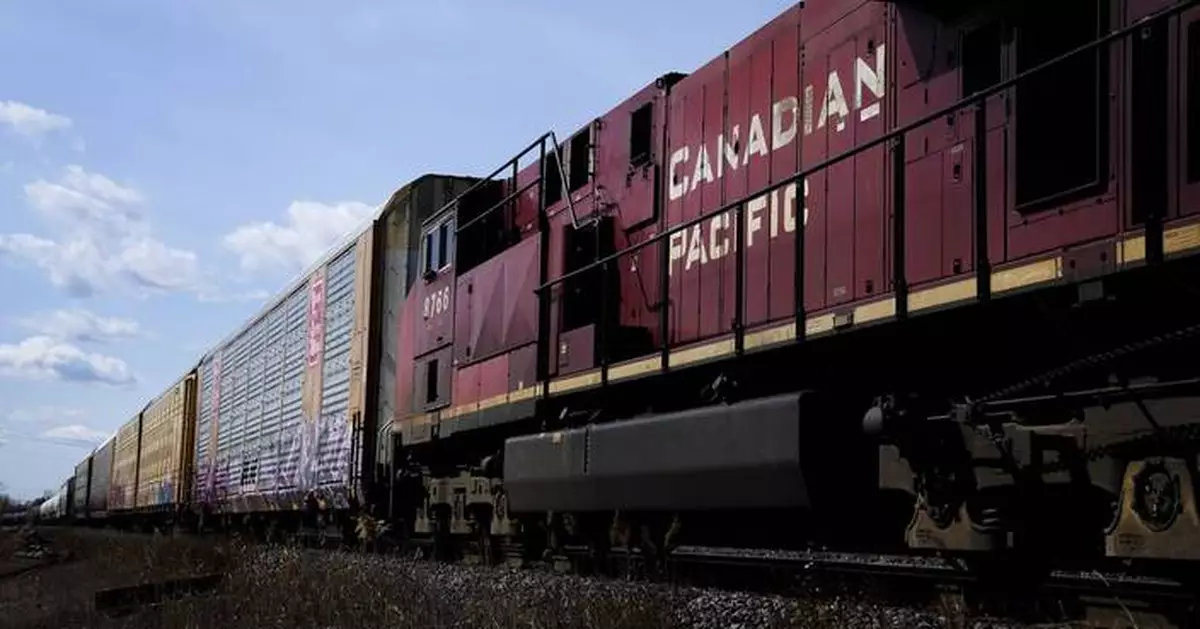DETROIT (AP) — Canada's two largest railroads are starting to shut down their shipping networks as a labor dispute with the Teamsters union threatens to cause lockouts or strikes that would disrupt cross-border trade with the U.S.
Both the Canadian Pacific Kansas City and Canadian National railroads, which haul millions of tons of freight across the border, have stopped taking certain shipments of hazardous materials and refrigerated products.
Both are threatening to lock out Teamsters Canada workers starting Thursday if deals are not reached.
On Tuesday, CPKC will stop all shipments that start in Canada and all shipments originating in the U.S. that are headed for Canada, the railroad said Saturday.
The Canadian Press reported that on Friday, Canadian National barred container imports from U.S. partner railroads.
Jeff Windau, industrials analyst for Edward Jones & Co., said his firm expects work stoppages to last only a few days, but if they go longer, there could be significant supply chain disruptions.
“If something would carry on more of a longer term in nature, then I think there are some significant potential issues just given the amount of goods that are handled each day,” Windau said. “By and large the rails touch pretty much all of the economy.”
The two railroads handle about 40,000 carloads of freight each day, worth about $1 billion, Windau said. Shipments of fully built automobiles and auto parts, chemicals, forestry products and agricultural goods would be hit hard, he said, especially with harvest season looming.
Both railroads have extensive networks in the U.S., and CPKC also serves Mexico. Those operations will keep running even if there is a work stoppage.
CPKC said it remains committed to avoiding a work stoppage that would damage Canada's economy and international reputation. “However we must take responsible and prudent steps to prepare for a potential rail service interruption next week,” spokesman Patrick Waldron said in a statement.
Shutting down the network will allow the railroad to get dangerous goods off IT before any stoppage, CPKC said.
Union spokesman Christopher Monette said in an email Saturday that negotiations continue, but the situation has shifted from a possible strike to “near certain lockout” by the railroads.
CPKC said bargaining is scheduled to continue on Sunday with the union, which represents nearly 10,000 workers at both railroads. The company said it continues to bargain in good faith.
Canadian National said in a statement Friday that there had been no meaningful progress in negotiations and it hoped the union “will engage meaningfully” during a meeting scheduled for Saturday.
“CN wants a resolution that allows the company to get back to what it does best as a team, moving customers' goods and the economy,” the railroad said.
Negotiations have been going on since last November, and contracts expired at the end of 2023. They were extended as talks continued.
The union said company demands on crew scheduling, rail safety and worker fatigue are the main sticking points.
Windau said the trucking industry currently has a lot of excess capacity and might be able to make up some of the railroads' shipping volumes, but, “You're not going to be able to replace all of that with trucking.”

FILE - Canadian Pacific trains sit at the main CP Rail train yard in Toronto, March 21, 2022. (Nathan Denette/The Canadian Press via AP, File)
NEW YORK (AP) — U.S. stock indexes stormed back from big early drops to finish higher, led by a handful of highly influential Big Tech companies. The S&P 500 gained 1.1% Wednesday after erasing a morning wipeout of 1.6%. A majority of the index’s stocks still finished lower for the day, but gains for Nvidia and other tech stocks were enough to drive it to a third straight gain and back within 2% of its all-time high set in July. The Dow Jones Industrial Average rose by 124 points, or 0.3%, after rallying back from a drop of 743 points. The Nasdaq composite jumped 2.2%.
THIS IS A BREAKING NEWS UPDATE. AP’s earlier story follows below.
NEW YORK (AP) — Most U.S. stocks are falling Wednesday as traders scale back their expectations for how much relief the Federal Reserve will deliver next week when it begins cutting interest rates.
Seven out of every 10 stocks were sinking within the S&P 500, but the index was nevertheless 0.4% higher in afternoon trading after erasing a sharp slide from earlier in the morning. The gain was due almost entirely to the performance of just one highly influential stock: Nvidia.
The Dow Jones Industrial Average was down 76 points, or 0.2%, as of 2:30 p.m. Eastern time, after erasing almost all of an earlier drop of 743 points. The Nasdaq composite, meanwhile, was up 1.4% thanks to Nvidia and a handful of other Big Tech stocks.
The sharp see-saw trading, where the Nasdaq composite roared back from an earlier 1.4% slide, followed the government's latest update on inflation at the consumer level, which came in close to expectations. Overall inflation slowed to 2.5% in August from 2.9% in July, a touch better than expected. But prices rose more than expected from July into August when ignoring food and energy, and economists say that can be a better predictor of where inflation is heading.
All together, the data seemed to confirm that the Fed will indeed cut its main interest rate at its meeting next week, which would be the first such cut in more than four years. But it bolstered expectations that the Fed will begin with only a traditional-sized move of a quarter of a percentage point instead of the more severe half-point that some had been expecting.
“This isn’t the CPI report the market wanted to see,” said Seema Shah, chief global strategist at Principal Asset Management.
Investors have a long history of being overly optimistic about how much and when the Fed will cut interest rates, only to send stock prices lower after being confronted with reality. Wall Street loves lower rates because they can goose the economy by making it cheaper for U.S. companies and households to borrow. Cuts also give boosts to investment prices.
The downside of lower rates is that they can give inflation more fuel.
“We believe the market is pricing in more rate cuts than what will occur this year,” said Gargi Chaudhuri, chief investment and portfolio strategist, Americas at BlackRock.
This time, the Fed at least has already indicated it’s about to begin lowering interest rates as it shifts from fighting high inflation toward protecting the job market and keeping the economy out of a recession. With inflation down from its peak of 9.1% two summers ago, the Fed is hoping to ease the brakes off the already slowing economy.
A worry on Wall Street is that the cuts may prove to be too late, with many U.S. shoppers already struggling under the weight of high prices and stretched ability to spend more.
Vera Bradley’s stock dropped 5.9% after the designer of handbags and the parent company of the Pura Vida brand reported weaker profit and revenue for the latest quarter than analysts expected. It pointed to “stubbornly persistent macro consumer headwinds.”
Elsewhere on Wall Street, Trump Media & Technology Group sank 11.3% to worsen its rough run since March. The company behind former President Donald Trump’s Truth Social platform has often risen and fallen with expectations for Trump’s re-election chances, and he’s coming off a debate with Vice President Kamala Harris.
Since closing above $66 in early March, the stock has tumbled to $16.53. That affects Trump particularly because he is the company’s largest shareholder.
On the winning side of the U.S. stock market were solar-energy companies, which are seen as doing better under a Democratic White House than a Republican one. First Solar jumped 14.4%.
Big Tech also once again lifted the market. A handful of these behemoths have pulled away from the rest of the stock market, accounting for most of the S&P 500's return through the early part of this year, in large part on hopes about profits coming from the artificial-intelligence boom.
They faltered during the summer on worries that investors had carried the stock prices too high, including a 27% drop for Nvidia at one point, but they've been firming in the last couple weeks.
Beside the 6.8% rise for Nvidia, gains of 1.5% for Amazon and 1.5% for Microsoft were also big forces lifting the S&P 500. Because these companies are among Wall Street's largest by market value, their movements pack more punch on the index than almost every other stock.
In the bond market, the yield on the 10-year Treasury rose to 3.66% from 3.64% late Tuesday. The two-year yield, which more closely follows expectations for Fed action, rose more, to 3.65% from 3.59%.
In stock markets abroad, indexes fell across much of Europe and Asia.
Japan’s Nikkei 225 dropped 1.5% after a Japanese central bank official was quoted by Japanese media as indicating the Bank of Japan was getting ready to raise interest rates. The comments also pushed the value of the Japanese yen higher against the U.S. dollar, a move that earlier in the summer helped send financial markets around the world reeling.
AP Business Writers Yuri Kageyama and Matt Ott contributed.

The American flag hangs from the front of the New York Stock Exchange on Wednesday, Sept. 11, 2024, in New York. (AP Photo/Peter Morgan)

Currency traders talk near the screens showing the Korea Composite Stock Price Index (KOSPI), left, the foreign exchange rate between U.S. dollar and South Korean won and the Korean Securities Dealers Automated Quotations (KOSDAQ), at a foreign exchange dealing room in Seoul, South Korea, Wednesday, Sept. 11, 2024. (AP Photo/Lee Jin-man)

Currency traders talk near the screens showing the Korea Composite Stock Price Index (KOSPI), left, the foreign exchange rate between U.S. dollar and South Korean won and the Korean Securities Dealers Automated Quotations (KOSDAQ), at a foreign exchange dealing room in Seoul, South Korea, Wednesday, Sept. 11, 2024. (AP Photo/Lee Jin-man)

A currency trader walks by the screens showing the foreign exchange rate between U.S. dollar and South Korean won at a foreign exchange dealing room in Seoul, South Korea, Wednesday, Sept. 11, 2024. (AP Photo/Lee Jin-man)

A currency trader walks by the screens showing the Korea Composite Stock Price Index (KOSPI), left, and the foreign exchange rate between U.S. dollar and South Korean won at a foreign exchange dealing room in Seoul, South Korea, Wednesday, Sept. 11, 2024. (AP Photo/Lee Jin-man)















